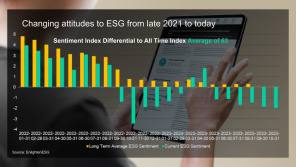Our government is a firm believer in the power of investors to push the companies they invest in towards behaviours that will be kind to the planet. And of course, the investors with the most muscle are those with the most cash to invest.
So, it was entirely logical for the government to take powers in Pensions Act 2021 to mandate a new climate-friendly approach by the big pension schemes – those with over £5bn of assets and the 38 authorised master trusts.
From October 2021, they must have an effective governance process for dealing with the climate related risks to their portfolio. Furthermore, by the end of next year, just as UK is hosting COP26, they must report in line with the Taskforce on Climate-related Financial Disclosure (TCFD) standards.
For them, climate change has been spring boarded into the ‘legislative must-do’ camp and we will now witness rapid change in the institutional markets. Understanding the difficulties that institutional investors face, and the things they may get wrong, is key to providing retail clients with a clear path through the ESG maze.
The clamour for investments that do good is already underway. Lang cat’s report on ESG, entitled ‘Crossing the ESG Event Horizon’, noted that in the UK alone Assets Under Management in ‘Responsible Investment’ funds grew 89 per cent between January 2019 and June 2020 (Source: Investment Association).
Looking across the Channel, PwC has estimated that the share of European assets held in ESG investments is set to leap from 15 per cent in 2020 to 57 per cent of all tradeable assets in the region by 2025, putting downward pressure on assets which do not make the ESG grade.
Dunstan Thomas decided to interview one of the many players in the world of ESG rating and building ESG-led investment strategies which reflect objective research in order to rate companies’ progress on ESG.
We asked Dr Daniel Philps, head of Rothko Investment Strategies, to explain to us how firms are being ESG rated today and how ESG measurement is likely to mature fast, aided and abetted by powerful machine learning algorithms analysing rich data sets.
ESG Ground Truths?
One of the problems with setting up an ESG index or rating system today is, in Machine Learning parlance, the universal ‘ground truths’ are not yet set firm. Institutional asset owners, pension consultants, asset managers and pension trustees often have different views of what socially or environmentally-responsible investing is and therefore what an ESG index should measure. Only segregated accounts, of the sort reserved for large institutions, allow that sort of purity of definition.











